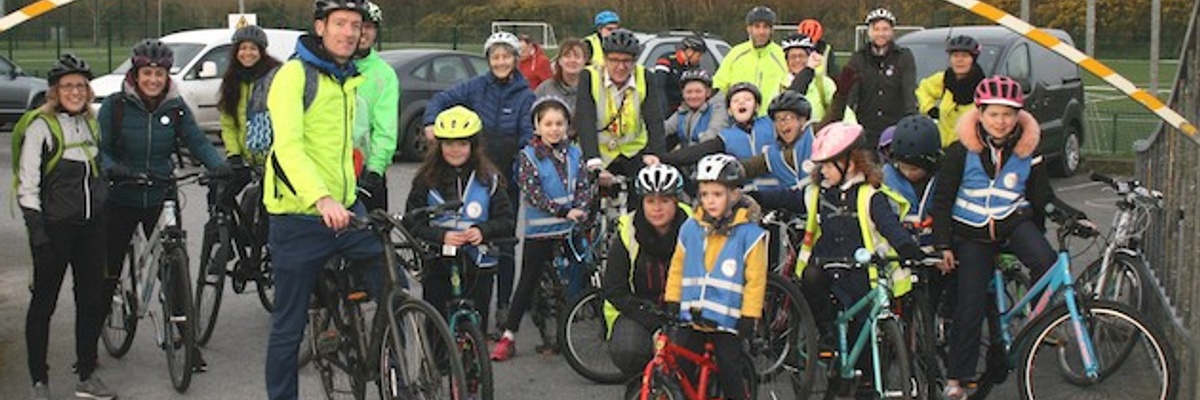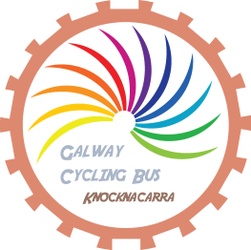Plan your route for your cycle bus
The first step is to plan your route. You’ll need to consider the following factors:
- Distance - approximately 2km in length
- Topography - relatively flat roads are most suitable
- Catchment - are your stops located near to housing estates or other high populated areas?
- Timing - arrival time at schools
- Levels of traffic along the route
Set up a meeting with important stakeholders
It’s essential that all stakeholders play a part in this project and you must make sure that they understand their responsibilities. The best way to start this is by organising with the school and parents.
School Management and Staff
You will need to liaise with the school to ensure you have a point of contact within the school. Their role is to work in tandem with the Cycle Bus planning team to ensure the needs and concerns of the school and children are met. The point of contact can then promote the project in the school and circulate sign-up forms.
Parents
Communicate with parents to make them aware of the new Cycle Bus. It’s a good idea to get the schools to circulate an email containing all the information pertaining to the Cycle Bus. Parents can also give you feedback on your project and help you improve your route to suit the needs of the students.
Students
Participating students should be briefed on the procedures of the Cycle Bus when possible before the journey begins. Children joining along the route for the first time should be guided and supported by the marshals to the rear of the convoy.
When on the road, make sure you consider the following factors:
- Many children have not cycled on the road before joining the Cycle Bus, haven’t cycled in a long time or have low levels of fitness. Do your best to support these children through guidance, praise and encouragement.
- Show them how to choose an appropriate gear for the incline.
- Remind them to leave a safe space between them and the person in front of them.
- Remind them to keep both their hands on the handlebars.
Other organisations
The local green schools programme or any travel schemes might be useful to contact as they can provide support for your Cycle Bus.
Facilitate the signup of students and create a committed pool of marshals
As mentioned in the previous step, you can get your point of contact in the school to help circulate sign-up forms. The liaison can hold on to these forms in a secure place and act as the point of contact for the students in the school.
For your Cycle Bus trips, you will need a reliable pool of at least 15 Marshals. We recommend that you have at least 4 Marshals per trip with 1 more on standby in case of emergency. When reaching out for volunteers, consider parents and teachers of the schools. It’s also a good idea to contact cycling organisations and local cycle shops to help recruit volunteers. Then take the newly recruited volunteers’ phone numbers and email addresses and add them to your contact groups. Doing a rota system will help ensure that marshals are always available. The full guide to marshal organisation can be found here. Children under the age of 8 need to be accompanied by a parent.
Before you get on the road, there is some essential equipment to ensure the safety of everyone in the Cycle Bus.
Make sure all of the students in the Cycle Bus have the following equipment.
- An appropriately sized bike in good working order
- Front and rear lights
- Wet gear
- Gloves
- Cycling helmet
The marshaling group have the following mandatory equipment:
- Pump
- Spare tubes
- Simple mechanical set
- First aid kit
- Front and rear lights on each marshal’s bike
All members of the Cycle Bus will need to wear a hi-vis jacket.
We recommend the purchase of cameras for the front and rear marshals at a minimum to help document any incidents that might occur.
Launch and communicate.
Your Cycle Bus is now ready to launch!
Now it is important to keep communication with all stakeholders - the school, students and marshals.
Form a group-chat for communication with the marshals and keep the school informed on possible news such as cancellations of Cycle Bus.
Keep the community informed and engaged in your new project by setting up social media accounts.









 "Welcome to the CycleBus Community on ChangeX. The Cyclebus initiative is about giving primary school children the opportunity to cycle safely to school in a safe, healthy, social, and enjoyable environment. It’s about community involvement where parents, grandparents, teachers, and volunteers all create the conditions for this to happen. Help us cut pollution and traffic congestion around schools. Help us create safe and healthy environments in our neighbourhood schools, and empower children to become responsible and active and give them the freedom and a lifelong love of cycling. Thanks for joining! "
- Alan Curran, Founder of CycleBus Galway
"Welcome to the CycleBus Community on ChangeX. The Cyclebus initiative is about giving primary school children the opportunity to cycle safely to school in a safe, healthy, social, and enjoyable environment. It’s about community involvement where parents, grandparents, teachers, and volunteers all create the conditions for this to happen. Help us cut pollution and traffic congestion around schools. Help us create safe and healthy environments in our neighbourhood schools, and empower children to become responsible and active and give them the freedom and a lifelong love of cycling. Thanks for joining! "
- Alan Curran, Founder of CycleBus Galway
